Sketching the Rogues’ Gallery
A legendary courtroom artist illustrates her own story.

‘Drawn Testimony: My Four Decades as a Courtroom Sketch Artist’
By Jane Rosenberg
Hanover Square Press, 254 pages
After 44 years of drawing criminals, celebrities, comedians, athletes, businessmen, and politicians who faced trials all over the country, courtroom sketch artist Jane Rosenberg finally sat down to write a memoir.
Writing the book, the artist told the Sun, “was very difficult and used up every moment of my time outside of court.” It took Ms. Rosenberg three years, but really, she said, it all “started 44 years ago.”

“Drawn Testimony” shares personal and behind the scenes moments with mobsters like the Gambino crime family boss, John Gotti, or the disgraced comedian Bill Cosby, accused sex offenders Harvey Weinstein, R. Kelly, and Jeffrey Epstein, boxing promoter Don King, football legend Tom Brady, actor Robert De Niro and director Woody Allen, along with Martha Stewart, Bernie Madoff, the Mexican drug lord El Chapo, and many more.
The list is long and captivating. Ms. Rosenberg also drew the Boston marathon bomber and Derek Chauvin, the Minneapolis police officer convicted in the death of George Floyd. She also covered terror-related cases after and before 9/11, and most recently, she was in the courtroom for the civil and criminal New York trials of President Trump.
“This is a witness to history, a witness to the drama of the courtroom,” said legendary journalist Juliet Papa, whose voice has lit up New York’s favorite radio station 1010WINS for decades. Ms. Rosenberg had asked Ms. Papa, with whom she sat through many of these trials, to join her at her book presentation at a Barnes & Nobles bookstore on Manhattan’s Upper West Side on Tuesday.

“I was a closet portrait artist,” Ms. Rosenberg told the audience, “I would do self portraits in my kitchen.” In the late 1960s and early 1970s, when Ms. Rosenberg was studying art, first at the State University of New York at Buffalo, and later at the Art Students League of New York, few people cared for portrait art. Andy Warhol created the screen prints of his Campbell’s Soup cans in 1962, a decade after Robert Rauschenberg Erased de Kooning, and a decade before Alexander Calder titled a yellow sheet metal sculpture Blondie. Meanwhile, Ms. Rosenberg was drawing tourists who visited Provincetown, Massachusetts, which she sold.
Attending a lecture by courtroom artist Marylin Church at the Society of Illustrators in Manhattan, Ms. Rosenberg was intrigued to do “a whole scene of people rather than just a head on a paper,” and she decided to try her luck at criminal court.
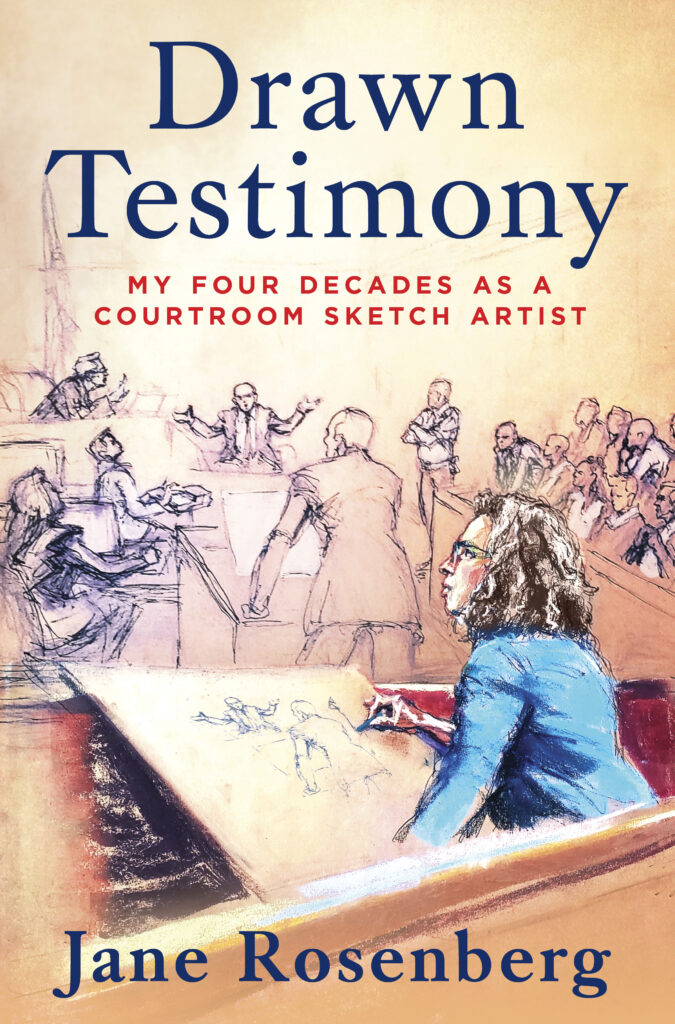
She sold her first sketch to NBC in 1981. It was a drawing of the arraignment of Craig S. Crimmins, who raped and murdered a violinist at the Metropolitian Opera House by throwing her body from the sixth-story Lincoln Center roof into a ventilation shaft. She first tried to sell her work to what was then “a small start-up company, CNN,” but they already had a sketch artist at court. Then she dared to call NBC and to her surprise, she sold her drawing to the producers at 30 Rockefeller Plaza.
“I didn’t even know what an arraignment was,” Ms. Rosenberg confessed to Ms. Papa, referring to the first time a defendant appears in court, when the prosecutor presents him with the charges. One day she was asked to draw Mark David Chapman, who shot John Lennon, “and I remember looking at the lawyer standing next to Chapman, thinking, I hate this guy, how could he do that? Represent that horrible guy, who just murdered John Lennon?” As the years went on, Ms. Rosenberg said smiling, she began to understand that “everyone has the right to a defense.” She ended up marrying a defense attorney, “and now I really get it.”
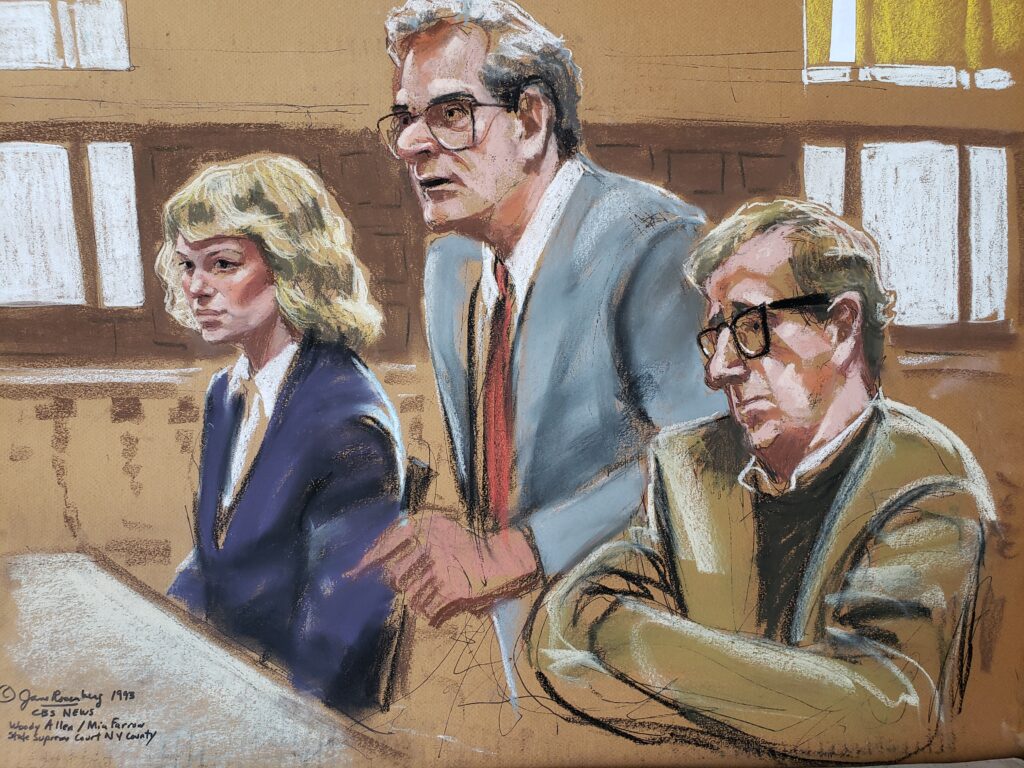
“For some reason,” Ms. Rosenberg told her audience on Tuesday, “Ghislaine Maxwell liked me.” During her trial, the fallen British socialite, who would be found guilty of child sex trafficking and other offenses in connection with her sometime boyfriend Jeffrey Epstein, began sketching Ms. Rosenberg, while Ms. Rosenberg was sketching her.
“In the pretrial hearing, I was in the jury box sketching her and she is sketching me,” Ms. Rosenberg said. “She was now interacting with me, smiling at me, nodding at me … and I like when my subjects are interacting with me, because otherwise I am just gonna get the back of their heads.”

The Mafia boss Gotti also interacted with Ms. Rosenberg: he asked her to slim down his chin. During his father’s civil fraud trial, Donald Trump Jr., on his way to the witness stand, whispered to Ms. Rosenberg that she should make him look sexy.
“Mobsters,” Ms. Rosenberg explained, are generally easier to draw, “because they’re caricatures of themselves, and they have a lot of hand gestures,” while beauty is often harder to capture. A beautiful person’s symmetry, their “subtle lightness”, she elaborated, are trickier to portray “than somebody, who has a lot of facial hair, bushy eyebrows, or crazy hair, or like Woody Allen,” whose ugly custody proceedings she covered, “with all these character lines in his face.” She described Mr. Allen’s ex companion, the actress Mia Farrow, as a “wispy soft beauty” that she had to “measure more carefully… Tom Brady falls in that category too.”
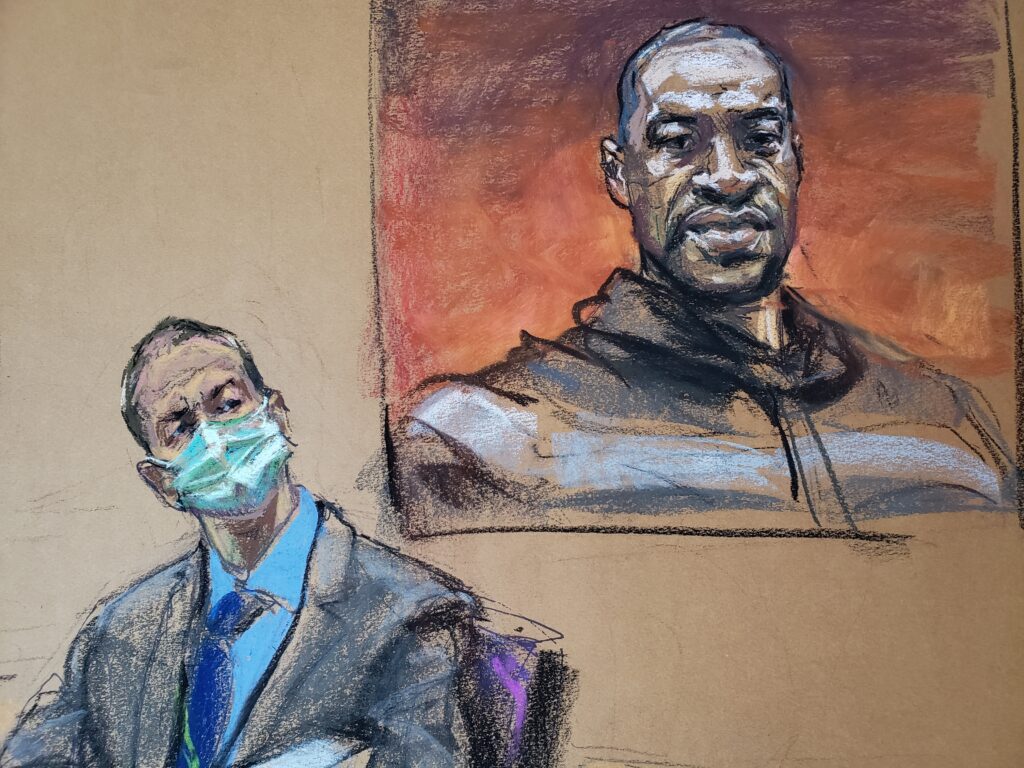
Martha Stewart was another challenging defendant. Stewart, who was on trial for securities fraud and obstruction of justice in 2004, had, as Ms. Rosenberg writes in her book, “reached a level of fame, where her first name alone identified her.” Ms. Rosenberg mostly got “her side profile,” she writes, “with all that famous golden hair getting in the way.” But eventually, Steward turned and “revealed her face,” and Ms, Rosenberg caught the “touch of vulnerability in her eyes, as if this mega star was still somehow eager to please, and anxious what people would make of her.”
In her book, much like in her sketches, Ms. Rosenberg captures the reader through honesty, a sense of humor, and subtle observations. Her sketch of Trump at his historic arraignment at criminal court at Manhattan in April 2023 was featured on the cover of The New Yorker.
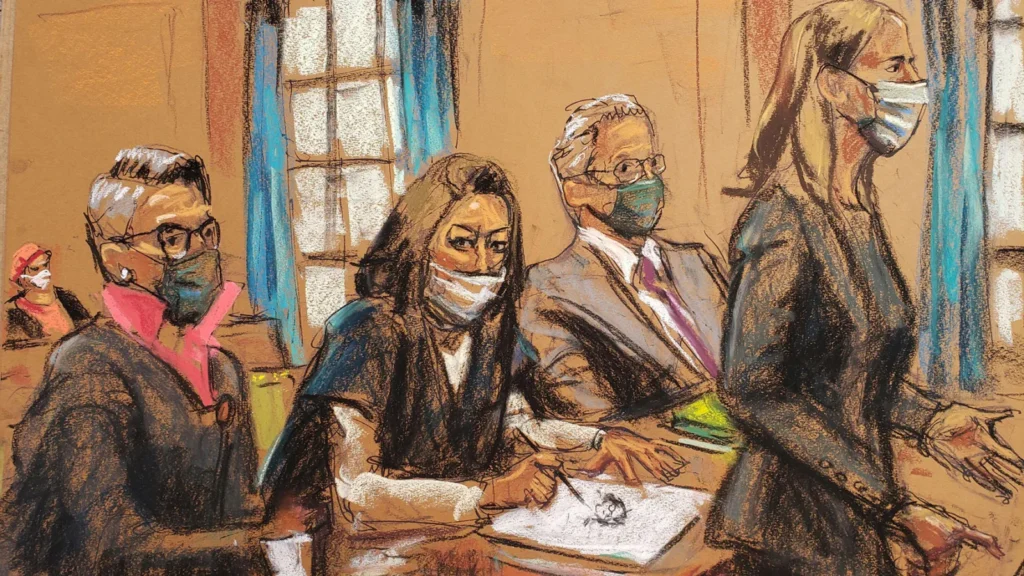
Ms. Papa remembered how Ms. Rosenberg would photograph her sketches of Trump during the criminal trial in the ladies bathroom.
“Because during the Trump trial,” Ms. Rosenberg explained, “you couldn’t move, the photographers were locked in a pen way down in the hallway, you couldn’t shoot a picture anywhere, there was a court officer every few feet… but right next to the courtroom was the ladies’ room and it had a beautiful window and a garbage can that was high, so I propped up my work up on the garbage can and I shot it right there and emailed it in from the ladies room.”
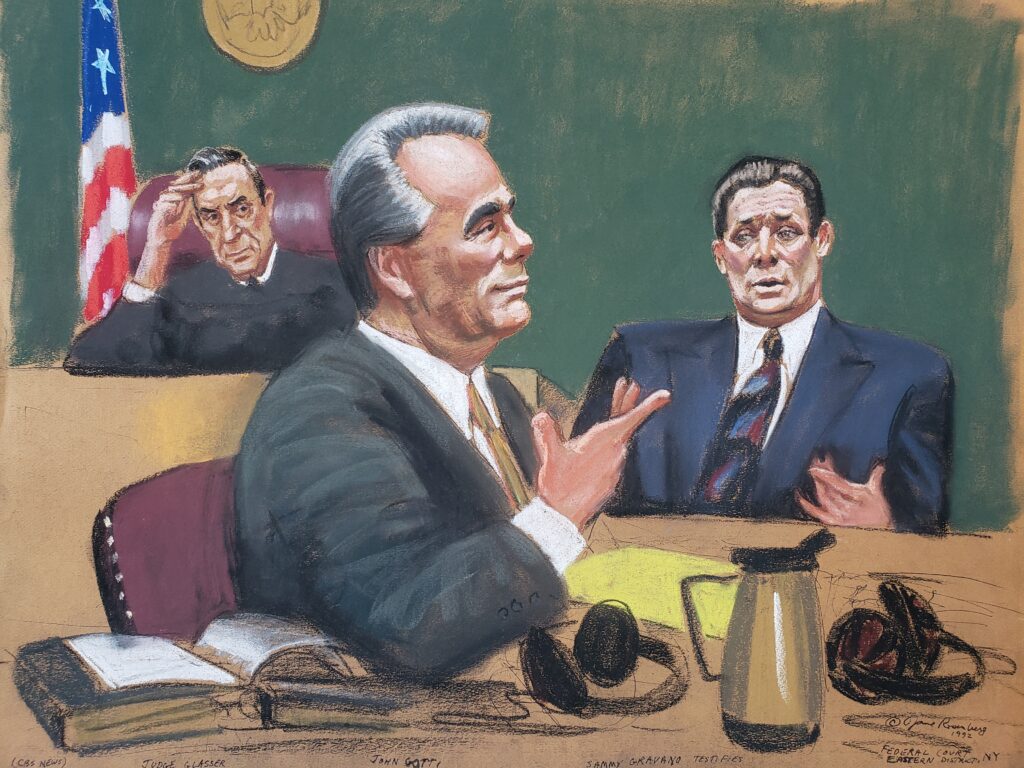
Photographing her sketches with her phone and sending them to the news outlets by email is one of the many things that changed over the years. “In the old days,” Ms. Rosenberg recalls, “I would go out and a camera man would take my sketch and tape it up on a truck, and shoot it, and he would send it in. Now it’s different, totally different.”
Another major difference are the deadlines. When she first started, she didn’t have her sketches finished until 5:30 pm for a 6 o’clock news show. “And now it’s 24/7. I have to have a sketch out all the time. All day long I am running out shooting my sketches and sending them in.”
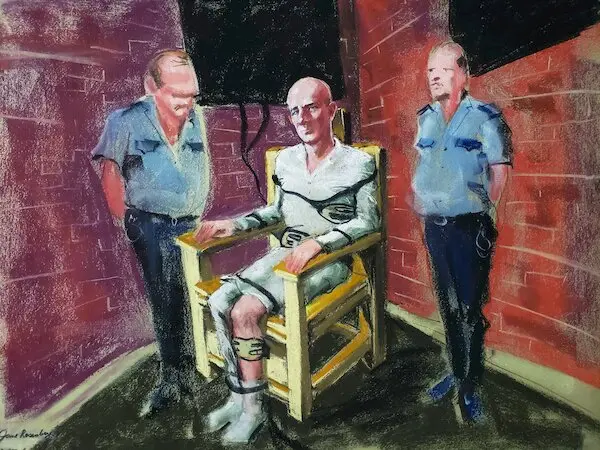
The rush shows in the drawings. The earlier work, like the sketches of Gotti, or Mr. Allen, and even of Stewart are more detailed, more refined than the later ones, like the portraits of Trump. Ms. Papa prefers the later work, she told the Sun after the event. “I like these edgier pictures,” she said, “because they’re a little more impressionistic.”
After their conversation ended, Ms. Rosenberg took questions from the audience. Someone asked about a famously botched execution Ms. Rosenberg witnessed. In the early 1980s, she was sent down to Alabama to sketch an execution in the electric chair of 33-year-old John Evans, who was condemned for murdering a shopkeeper while the victim’s two young daughters were forced to watch.
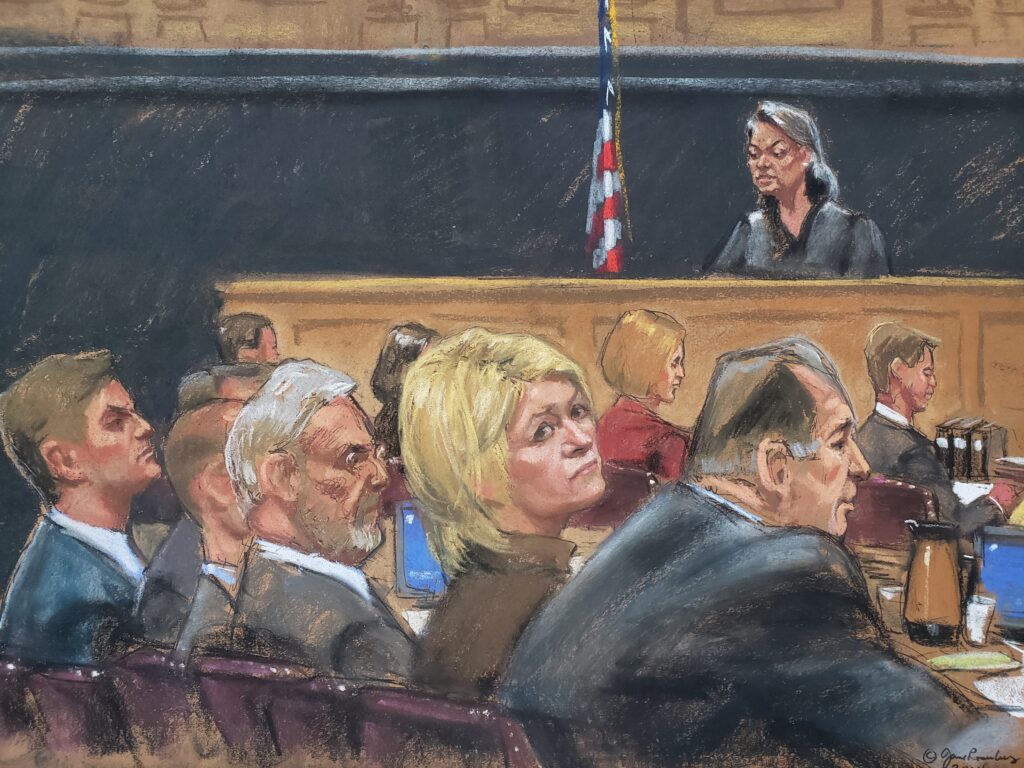
“Everything went wrong.” Ms. Rosenberg said, “the kneepads caught on fire, the helmet caught on fire, they had to do several jolts, and as I looked around the room … I thought, I just murdered that person. I didn’t have an opinion about the death penalty until that point, but after watching that, I felt like it’s wrong. I don’t want to commit murder which I felt that I had done by not stopping it.”
A woman at the book presentation asked Ms. Rosenberg how she decompresses, how she deals with all these tragedies and cruelties, and the artist revealed that she meditates “every single day, every single solitary day since 1974, twice a day. That centers me a little… There is a lot of bad news I cover… Sometimes I am heartbroken.”
When she flew to South Carolina to attend the trial of Susan Smith, who murdered her two young sons by driving into a lake, Ms. Rosenberg cried. She had left her own child back in New York and listening to the horrific details, “I had tears coming out of my eyes and I had to be careful not to get that on my paper because they’d ruin the pastels.”
Ms. Rosenberg, who is in her 70’s and lives at Manhattan with her husband, the defense attorney Lou Freeman, told the Sun that the publication of her book was “an ultimate moment in her life.” She added, “I hope I have more.”

